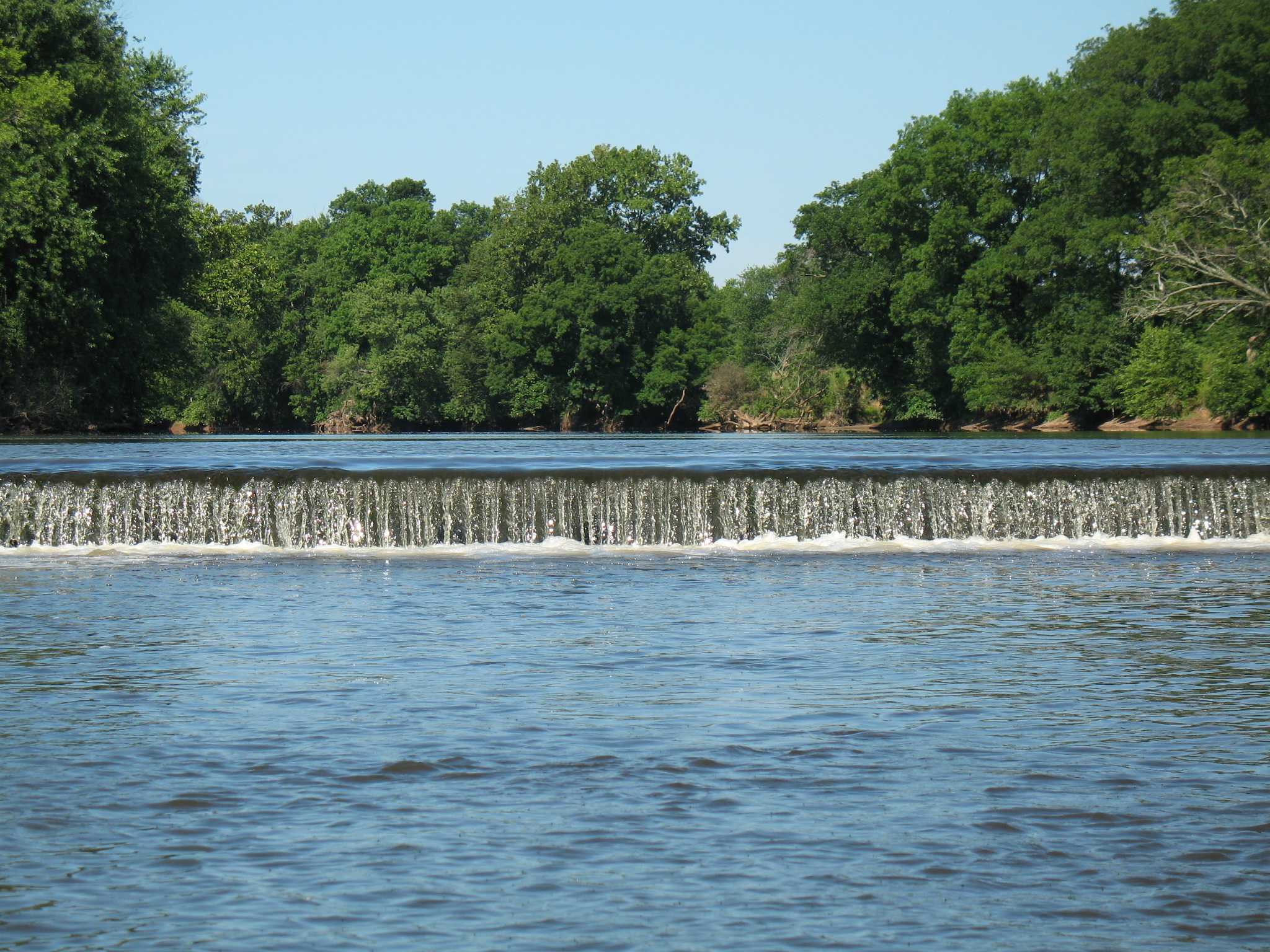| New Jersey Section of American Water Resources Association (NJ-AWRA) |
The New Jersey Section of the American Water Resources Association (NJ-AWRA) |
Removal of the Calco Dam on the Raritan River
By Carl Alderson of NOAA, Dave Bean of the NJDEP and John Jengo or MWH on behalf of El Paso Corp (now Kinder Morgan, Inc.)
The demolition of the Calco Dam, the lowermost obstruction to migratory fish passage on the main stem of the Raritan River, was successfully completed on August 3, 2011. The Calco Dam demolition project constituted the first significant dam removal in the Raritan River watershed and has advanced several of the river restoration goals set forth by the Sustainable Raritan River Initiative and the Raritan Piedmont Wildlife Habitat Partnership. The Calco Dam work is the first of three planned dam removals that will ultimately reopen over nine miles of the Raritan River and the lower 1.5 miles of the Millstone Rivers (in addition to numerous tributaries) that contain sandy and pebbly gravel river bed substrates, ideal spawning habitat for anadromous fish species such as American shad that formerly numbered in the millions. These three dam removals are expected to have a major “domino” effect that will provide the impetus for the removal of dams farther upstream on the Millstone River and the two branches of the Raritan River.
This fish passage restoration initiative is a ground-breaking example of a cooperative public-private partnership that was forged between Carl Alderson of NOAA, Dave Bean of NJDEP, and John Jengo of MWH on behalf of El Paso Corp (now Kinder Morgan, Inc), who is funding the project. Carl Alderson is involved in the Raritan River dam removal initiative through NOAA’s Damage Assessment Remedial and Restoration Program (DARRP) and Community-based Restoration Grants Program (CRP) in the mid-Atlantic region. Carl identified and mapped the location of each dam on the Raritan River and its major tributaries; he then prioritized the dozens of obstructions that he identified into a high priority “short list” of the dams that were the most destructive to fish populations and thus, the most critical to permanently remove. The top three dams on that list, the Calco Dam, the Robert Street Dam, and the Nevius Street Dam, which have been blocking migratory fish passage for threatened species such as American shad for over 110 years, became the three obstructions slated for removal in this current Raritan River dam removal effort. Carl’s work on the restoration of migratory fish passage in New Jersey supports NOAA's overarching ecosystems approach to fisheries management and sustainable habitat enhancement and restoration.
David Bean is on staff of the NJDEP’s Office of Natural Resource Restoration (ONRR) within which he advances the goals of ONRR, which are principally the design and management of wetland and riverine restoration projects, performing injury assessments, and executing Natural Resource Damages (NRD) settlement agreements. John Jengo, an environmental consultant representing Kinder Morgan, Inc., worked closely with David Bean to resolve the claims against El Paso for damages to New Jersey’s natural resources caused by the operation of former industrial sites on the Raritan and Delaware Rivers, several of which John had investigated and remediated on behalf of El Paso. The trusting partnership between the NJDEP and Kinder Morgan, Inc., as well as each party’s independent assessment of both the natural resource damage and the ecological uplift afforded by each dam removal, allowed for an amenable and amicable NRD settlement to be reached. All parties demonstrated a commitment to the restoration of the Raritan River by entering into a settlement for natural resource damages that allowed the settlement action to be an actual restoration project in lieu of a cash payment to the State of New Jersey general fund. This innovative agreement enabled the actual restoration of a natural resource while freeing the NJDEP from the time and liability usually associated with such projects.
Raritan River Before Calco Dam Removal


